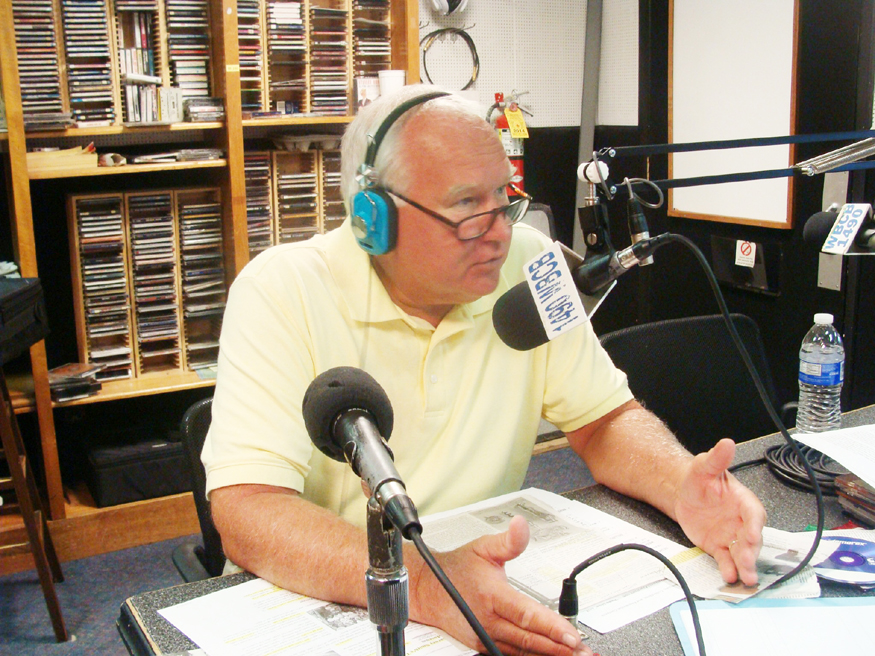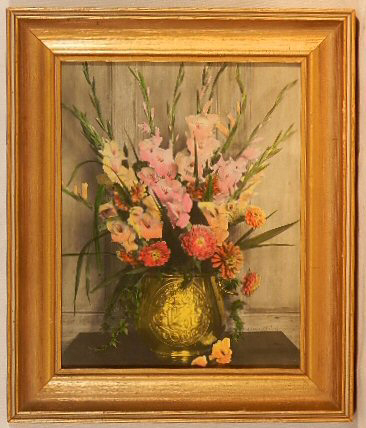Michael Ivankovich is an auctioneer, appraiser and home downsizing specialist in Doylestown, Penn., and has specialized in Wallace Nutting and early Twentieth Century hand colored photography for more than 35 years. He has authored numerous books on Wallace Nutting. His next Wallace Nutting auction will be May 13 in Fort Washington, Penn., in conjunction with the 2016 Wallace Nutting Collectors Club Convention. For details, www.wnutting.com.
Tell us about Nutting’s popularity.
Beginning in 1897, Wallace Nutting went on to take nearly 50,000 different pictures. Most failed to meet his high standards and were destroyed and, by most estimates, only 2,500 different titles were sold commercially. It is the individuality of each picture being hand colored, and Nutting’s sense of style, perfection and taste, that helped to make his pictures so popular during the early Twentieth Century. They were beautiful, inexpensive and provided much of America’s growing middle class with the opportunity to decorate the walls of their homes at a very affordable price. The peak of Wallace Nutting picture popularity was 1915–25. However no fad lasts forever and people eventually began to tire of them.
How long have you been collecting Wallace Nutting works and what was the first piece you bought?
The way I got started was a friend of mine had a small collection from when she bought her first house. The first time most people buy a house, they put most everything into the deposit and have little money left over to decorate with. I was looking to decorate my house and I fell in love with Wallace Nuttings when they were $10 to $15 each. “Larkspur” was my first purchase. Basically, two led to four, and four led to ten. I became a dealer to finance my collecting habits.
Tell us about Nutting’s close-framed florals.
Many florals were “close-framed,” which means that there was no mat, and that the frame surrounded the picture itself. Most close-framed florals were signed on the image itself, often in pencil (and not pen), but the signature was often overlooked because of its small size, especially on miniature or smaller pictures. Florals with the title written on the matting are obviously easier to identify than untitled ones. Perhaps the biggest problem with Wallace Nutting’s florals is that the backing papers are all nearly 100 years old, have become extremely fragile and brittle and, many have been lost. And once the copyright label has been lost on closed-framed pictures, how do you determine the title of the picture? We’ve tried to solve this with free access to the Wallace Nutting Floral Library at http://www.wnutting.com/Florals.htm.
When did you gravitate to Nutting’s close-framed florals?
Florals were an unknown commodity when I started collecting. Back then, in the early days of Nutting before anyone knew what was out there, I once bid $200 on a floral when $50 was a lot of money. Someone outbid me so I didn’t get the first floral I wanted. We’ve got them all over our house now; they just jump right off the wall.
What’s the rarest work of his you have seen?
There is not much that we haven’t seen. “Shoeing the Gray Mare,” hand colored and signed “With Compliments, Wallace Nutting,” will be in our May auction. I’ve seen it in black and white, I’ve seen it in a magazine article, but we’ve never seen it matted, signed, titled and hand colored. It came out of Maine.
When did you start doing auctions?
We ran our first auction in 1988 and we’ve been doing it ever since. We primarily focus on early Twentieth Century hand colored photography with 80–85 percent being Wallace Nutting and the balance being Charles Sawyer, Fred Thompson, Davidson Davidson and the like. We’ve made a lot of friends doing this. We developed a strong following at our auctions.
Is the market good for Nutting works now?
If you like Wallace Nutting, there hasn’t been a better time to buy Nutting in 25 years. Nutting prices probably peaked in the late 1990s when there was an influx of speculators. Most have left the market, prices have returned back to 1980s levels, and Nuttings have become much more affordable today.
What’s the most interesting thing about Nutting that is not well known?
He had a certain synergy and by that I mean his work covered a whole lot of different areas. He claimed in his 1936 biography to have sold between five and ten million hand colored photographs. He also went on to write 20 books. And he reproduced the finest benchmade furniture of the Twentieth Century. It was this synergy of Wallace Nutting pictures, Wallace Nutting books and Wallace Nutting furniture that made him larger-than-life and so collectible
Tell us about your radio show.
It’s going on two years. I’m 65 now and can’t do all the things I used to. I’ve just grown too old to move much furniture. We’ve also sensed a changing marketplace and decided to make a transition. We still do auctions, just not as many. I spend more time helping people downsize their homes and deal with their antiques and collectibles. The radio show is called What’s It Worth? Ask Mike the Appraiser and has two goals: We help our listeners understand the value of what they own, and we explain their best selling options. I’m not getting famous but I’m having fun. The show airs live on WBCB 1490 AM in Philadelphia every Friday morning from 9 to 10 am, and can be heard anywhere in the world on the Internet at www.WBCB1490.com.
—Andrea Valluzzo






